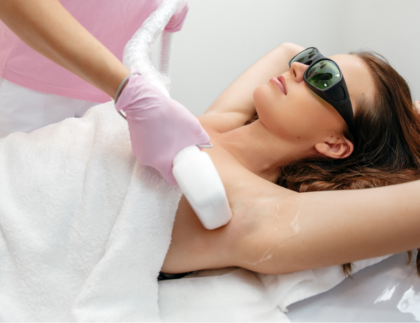
Chemical peels are a popular cosmetic treatment to improve the appearance of the skin. They are used to treat fine wrinkles, age spots, acne scars, and other skin blemishes. The peel uses a chemical solution to remove the outer layer of dead skin cells, revealing new, younger-looking skin underneath.
There are different types of chemical peels available, and your doctor will choose the best one for you based on your individual needs. The depth of the peel will determine how long it takes for your new skin to heal and how long the results will last.
Superficial peels are the mildest type of peel. They use a light-acid solution to gently remove the top layer of dead skin cells. This type of peel can be done in your doctor’s office and does not require any anesthesia.
Medium peels use a stronger acid solution to remove the top layer of skin and some of the middle layer. This type of peel requires anesthesia and is usually done in a hospital or outpatient surgery center.
Deep peels are the strongest type of peel. They remove the skin from the top layer all the way down to the bottom layer. Deep peels are very rare because they can cause serious side effects, such as scarring and infection. This type of peel requires anesthesia and is usually done in a hospital or outpatient surgery center.
The process of performing a chemical peel is not complicated, but it does require some preparation on the part of the patient. First, the area to be treated must be clean and free of any oils or makeup. The doctor will then select the appropriate strength of the peel solution based on the patient’s skin type and the desired depth of the peel.
The next step is to apply the peel solution to the skin. This is usually done with a cotton swab or other applicator. The doctor will carefully monitor the amount of time the solution is in contact with the skin, as this will determine the depth of peel achieved. After the allotted time has passed, the solution is neutralized and removed from the skin. The doctor will then evaluate the results and may perform a second peel if necessary.
Certain risks are associated with any type of chemical peel, however, they are typically mild and temporary. Some of the most common side effects include skin irritation, redness, swelling, and crusting. In rare cases, more serious side effects can occur, such as infection or permanent scarring. It is important to talk to your doctor about all of the possible risks and side effects before undergoing a chemical peel.
If you’re considering a chemical peel, it’s important to do your research and understand the risks involved. This article should have provided you with a basic understanding of what chemical peels are, how they work, and the available different types. It’s also important to be aware of the potential risks involved in any type of cosmetic procedure. If you have further questions or would like to schedule a consultation, please contact us today at Denude Med.









